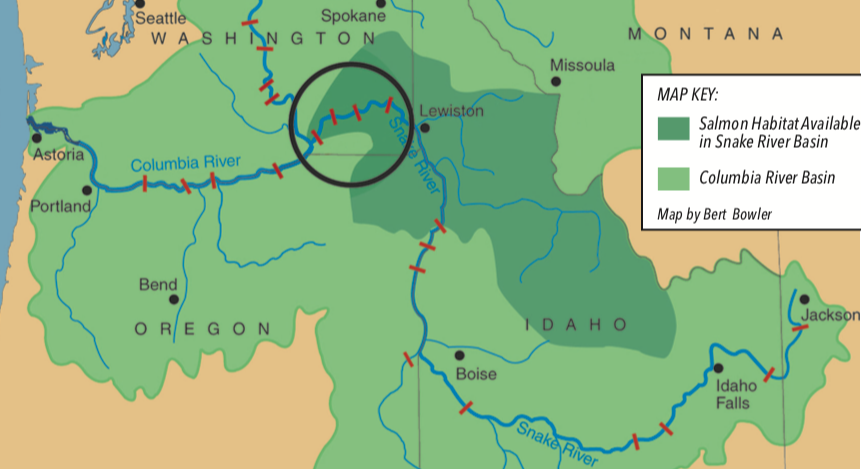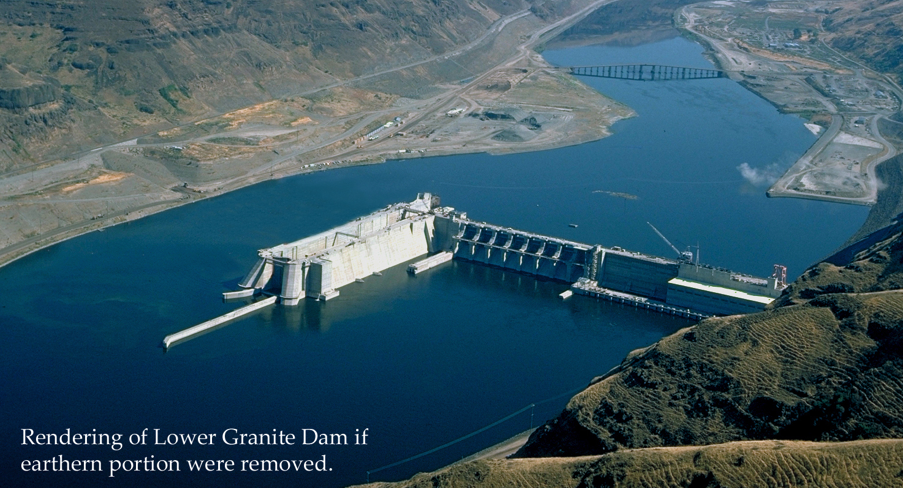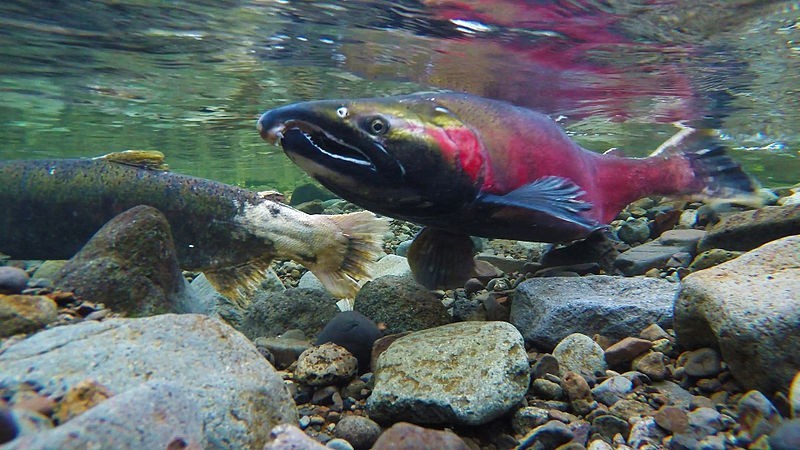After 3O years and more than $17 billion spent on failing federal recovery efforts, Idaho's salmon and steelhead are in crisis and face the growing threat of extinction. The window of opportunity is closing. It's time for public officials to forge a new path forward to save our fish.
View Regional Coalition Website
Join our Salmon Advocates Team!
Grassroots team of local residents, meets monthly on first Wednesdays, 12pm MT, Zoom - all are welcome!
Idaho’s Wild Salmon & the Snake River
The story of Idaho's wild salmon, steelhead and rivers is one rooted in communities across the state, particularly Indigenous communities who inhabited these lands and built relationships with these rivers and fish long before white settlers arrived. The Columbia-Snake River Watershed was once one of the top salmon producing ecosystems in the world. Nearly 50% of the Columbia River’s legendary runs of wild salmon and steelhead historically came from the Snake River and its tributaries.
Each year sockeye and chinook salmon as well as steelhead and lamprey travel more than 900 miles from the Pacific Ocean to Idaho’s high mountain waters in the longest salmon migration on Earth.
Unfortunately, Idaho's once abundant anadromous fish populations plummeted when four dams were completed on the lower Snake River in the 1970s. These dams created a deadly corridor for salmon migrating to and from the high-quality stream habitats in the Snake River basin to the Pacific Ocean.

Today, Idaho's wild salmon and steelhead are in crisis and face declining trends, with major stocks in the Salmon and Clearwater Rivers on the edge of extinction. In 2017 only 250 pairs of wild Middle Fork Salmon Chinook returned to over 600 miles of Idaho habitat, some of the best in the lower 48 states. Recent returns were near record lows for steelhead, sockeye and chinook salmon.These important stocks are at immediate risk of extinction.
Since Idaho’s salmon and steelhead were listed and threatened or endangered under the Endangered Species Act (ESA) in 1991--initiated by the Shoshone-Bannock Tribe--more than $17 billion taxpayer and ratepayer dollars have been spent on failing federal recovery strategies.
Investing in Smart Solutions that Work for People and Fish

The science is clear: Removing the four lower Snake River dams is the single most important step we can take to ensure recovery of abundant wild salmon and steelhead for future generations of Idahoans. This must be coupled with investments that benefit all affected river communities and users. Business as usual is not sustainable for Idaho’s salmon, river communities, or BPA and the Idaho ratepayers who continue to pay more each year.
We need smart bold action immediately! BPA and the other federal agencies have failed to restore Idaho’s steelhead, salmon and fishing. It’s time for Idaho’s Governor and other leaders in the Pacific Northwest to work together to bypass the federal failures which Idaho’s salmon can no longer afford.
By bringing stakeholders together and pursuing creative solutions, we can realize the economic and ecological benefits of a restored river and ensure that BPA is financially sound and continues to provide cost-effective electricity for the region. Lets stop spending billions on a failing strategy, and make smart investments that actually restores Idaho’s salmon, revitalizes our river communities, while addressing the needs of impacted interests.
It's time to rebalance the salmon and dam equation
Times have changed. The Northwest no longer needs the four Lower Snake River dams.
Myth: We Need the Hydropower
Fact: They Produce Low-Value Hydropower Which Can Be Replaced with Renewables.
Hydropower from the four lower Snake River dams is now less valuable than ever. These dams produce power mostly in the spring when hydropower is abundant, and often sold as excess power to California. The four lower Snake River dams together generate about 4% of Northwest electricity. This modest contribution can be cost-effectively replaced as documented by an in-depth technical analysis, Lower Snake River Dams Power Replacement Study.
Myth: We Need The Dams for Shipping
Fact: River Shipping Has Declined 70%. Alternatives exist.
Barge navigation through the lower Snake River to ship grain and other agricultural commodities was once a primary purpose of the dams. However, in the past 20 years, freight volume has declined by 70%; grain volume has declined 45% in favor of shipping by rail. The Northwest can choose to make smart investments in expanded rail to serve shipping needs and keep communities whole.
Myth: We Need the Dams for Irrigation
Fact: These Dams Provide Minimal Irrigation
Only one of the four reservoirs provides water for irrigation, and only for a few irrigators. There are reasonable solutions to keep the irrigators whole without the dams, such as adjusting intake pipes to pump water from the river level than reservoir level.
Myth: They Provide Flood Control
Fact: These Dams Do Not Provide Flood Control
The lower Snake River dams are all “run-of-river” dams and do not provide flood control.
Myth: The Economy Will Tank Without the Dams
Fact: The Economy Will See Many Benefits from Removing These Dams
Restoring Snake River salmon runs will be a huge boost to sport, commercial, and tribal fishing economies that were once a mainstay of the Northwest. Replacing Snake River hydropower with modern solar and wind generation, battery storage, energy efficiency, and demand response technologies will diversity and update the Northwest’s energy portfolio and create many jobs.
Be Part of the Solution! Make Your Voice Heard!
Join us and help advance the largest fisheries restoration project in human history!
Join our Salmon Advocates Team!
Grassroots team of local residents, meets monthly on first Thursdays, 7pm MT, Zoom - all are welcome!
